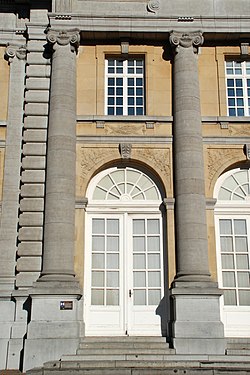| Africa Palace | |
|---|---|
 Front view of the Africa Palace | |
 Interactive map of Africa Palace | |
| Former names | Palace of the Colonies |
| Alternative names | Palace of Africa |
| General information | |
| Type | Palace |
| Architectural style | Neoclassical |
| Location | Tervuren, Flemish Brabant, Belgium |
| Coordinates | 50°49′43″N4°30′55″E / 50.82861°N 4.51528°E |
| Current tenants | Royal Museum for Central Africa (RMCA) |
| Completed | 1897 |
| Client | King Leopold II |
| Design and construction | |
| Architect | Alfred-Philibert Aldrophe |
| Website | |
| afrikapaleis | |
The Africa Palace or Palace of Africa (Dutch : Afrikapaleis; French : Palais d'Afrique or Palais de l'Afrique) is a neoclassical palace in Tervuren in Flemish Brabant, Belgium, just outside Brussels. It was originally built in 1897 by order of King Leopold II to house the colonial section of the 1897 International Exposition. [1] [2] Nowadays, it is part of the Royal Museum for Central Africa (RMCA), and houses offices, storage rooms, classrooms and a reception hall. It was formerly called the Palace of the Colonies (Dutch: Koloniënpaleis or Paleis der Koloniën; French: Palais des Colonies) until 2018. [3]












